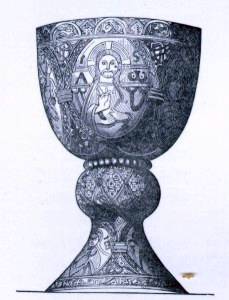| A
Roman Catholic teaching which claims that the substance of the bread
and wine in the Lord's Supper is changed into the substance of the
body of Christ while the accidents of the bread and wine are unchanged.
|
 |
|
Chalice
with picture of Christ
|
The teaching of transubstantiation
depends on a distinction proposed by Aristotle between an unchanging essential
"substance" and outward appearances or attributes called "accidents."
With this distinction in place, medieval theologians could argue that
the substance of the bread and wine in the Lord's Supper could be changed
into the substance of the body of Christ while retaining the outward appearance
or accidents of bread and wine. The doctrine of transubstantiation was
affirmed at the Lateran Council
IV (1215) and classically formulated later by Thomas
Aquinas. In the face of Protestant criticism, it was reaffirmed at
the Council of
Trent
(1545-1563).
|